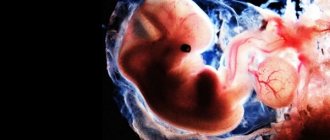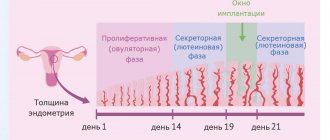What to do if your nipples are darkened?
Noticing that the nipples have turned brown or black, seeing dots on them, the woman begins to panic and looks for folk remedies to lighten pigmentation.
In fact, during pregnancy, the only way to protect delicate skin from pigmentation is to avoid contact with sunlight. Lightening creams and masks can be used as usual, but cannot be used during pregnancy. Do not forget that darkening of the nipples during this period is a manifestation of the preparation of the mammary glands for breastfeeding. Therefore, it is best not to interfere in this process. If after the birth of the child the pigmentation has not decreased, then you can use lightening creams and masks. The best effect is provided by natural herbal ingredients:
- juice of lemon, parsley, cucumber, pomegranate;
- masks made from mashed homemade strawberries;
- lotions with white clay.
You can also use ready-made lightening agents, but it is important to read their composition on the packaging so as not to harm yourself. If your nipples have darkened or spots have appeared, but this has nothing to do with pregnancy or hormonal imbalances, then you should not lighten them
You need to immediately go to the doctor so that he can see the full picture of what is happening, make a diagnosis and prescribe timely treatment.
If your nipples have darkened or spots have appeared, but this has nothing to do with pregnancy or hormonal imbalances, then you should not lighten them. You need to immediately go to the doctor so that he can see the full picture of what is happening, make a diagnosis and prescribe timely treatment.
Pregnancy leaves its mark on a woman’s entire body. The breast is usually the first to react to such changes.
Literally from the early weeks of pregnancy, it can begin to swell and fill up. Subsequently, the breast changes its shape, in most cases greatly increasing in size.
The nipples do not lag behind the mammary glands, becoming larger and more sensitive, and also changing in color. The space around the nipple - the areola - also increases in size (from the usual 5 cm in diameter to 8 or more).
What happens to the breasts during pregnancy?
After fertilization of the egg and its attachment to the wall of the uterus, the woman’s entire body is reconstructed to a new regime, a prerequisite for which is changes in the mammary glands. Such changes include:
- an increase in the volume of the mammary glands;
- increased sensitivity and pain;
- darkening of the areolar circles (the area around the nipples);
- the appearance of discharge from the nipples;
- formation of a venous network on the chest.
The mammary glands begin to increase in size from the first days of pregnancy. On average, during the entire period of bearing a child, breasts can increase by 2-3 sizes. Therefore, at this time, a woman should pay special attention to caring for her mammary glands, which will help maintain their shape and prevent the formation of stretch marks in the future. You should use special bras and creams; it is also advisable to remember a set of physical exercises for the chest and learn how to massage.
One of the early signs of pregnancy is increased sensitivity and pain in the breast area. Often, the expectant mother notices numbness, tingling or itching of the mammary glands, which indicates their preparation for lactation. In addition, the changes extend to the nipples, which become darker along with the surrounding areolas. The diameter of the nipple circles can increase up to 5 cm, while the length of the nipples in most cases reaches 1-1.3 cm.
In the last weeks of pregnancy, a woman begins to notice the appearance of discharge from the nipples. This is how colostrum (secret) appears, which is necessary for babies in the first days of their life. If such discharge becomes abundant, it is advisable to use lactation pads. In most women, a venous network protrudes on enlarged breasts, which occurs due to increased blood flow. This goes away after childbirth and does not pose a health risk.
As a rule, pain and increased sensitivity in the breast area disappear after the first weeks of pregnancy. In later stages, a woman no longer worries about the pain associated with breast growth, but other changes appear in the form of darkening of the areolas and enlargement of the nipples2.
Join the Similac club “Growing Together!” and receive discounts, gifts and advice from experts.
Join the club →
Pigmentation care
It is important to regularly cleanse the pigmented area of excess hair and dirt. The nipples and their areolas are washed with warm water and soap.
If there are cracks, use Bepanten healing ointment and antiseptics. You should not sunbathe topless or visit a solarium if an age spot appears. Otherwise it may turn black even more. You are required to appear on the beach only in a swimsuit. It is important to wear a comfortable bra that does not cause discomfort or irritate your skin. Do not use aggressive cosmetics that may cause breast irritation. You also need to maintain a healthy diet and avoid excessive drinking and smoking.
Causes of darkening during pregnancy
During pregnancy, a woman may notice that her papillae have become very dark. At the same time, the breasts increase in size, become heavier and react painfully to touch. Typically, nipples begin to change color after the 5th week of gestation. The process is accompanied by increased breast sensitivity. An increase in hormone levels provokes excessive formation of the melanin pigment - the circle of the papilla becomes dark. Dark spots also appear on the nipple.
Is pigmentation restored?
After cessation of lactation, the darkening of the nipples disappears on its own. The level of hormones stabilizes, their imbalance disappears, and the degree of melanin decreases. The areola takes on the color it had before pregnancy and breastfeeding.
If the color change is not associated with pregnancy and lactation, and the affected nipple resembles a black flower, then you will have to come to an appointment with a mammologist. A breast examination will reveal the causes of the pathology. A man needs to be examined by a urologist and andrologist.
To identify the causes of pathology, ultrasound, MRI, and mammography are prescribed. If cancer is suspected, a biopsy is performed. A swab is sometimes taken from the nipple to determine if it is bacterial.
Skin changes during pregnancy
During pregnancy, the female body invariably changes.
What physiological skin changes occur during pregnancy?
During pregnancy, under the influence of hormones, the skin around the nipples and in the genital area becomes darker and a dark line (Linea nigra) appears in the middle of the abdomen.
During the period of intrauterine development of the fetus, due to the tension of the skin, purple and pink stripes (lines), the so-called stretch marks, may appear.
Some women experience the development of age spots on the face (melasma).
Could these phenomena be temporary? Can they be treated?
Some physiological phenomena may resolve on their own after delivery (such as pigmentation around the nipples and a dark line on the abdomen). Others persist, although less pronounced, for a long time (styria). Pigment spots can be eliminated with special whitening creams. Unfortunately, creams against the appearance of stretch marks practically do not work. There are various techniques that reduce optically noticeable stretch marks that can be used after childbirth (laser resurfacing, mesotherapy procedures, plasma lifting procedures).
During pregnancy, some diseases may occur that are observed only in the given physiological state of the woman and usually resolve after childbirth.
polymorphic dermatitis of pregnant women.
This itchy dermatosis develops, according to various sources, in 1 in 300 pregnant women.
The rash usually begins on stretch marks in the abdomen and can spread to other parts of the body.
This disease is not dangerous to the fetus and usually resolves completely within 6 weeks after birth.
It is extremely rare that this dermatitis develops after the birth of the baby, but completely resolves after 6 weeks.
Bullous pemphigoid of pregnancy - BPP (herpes of pregnancy) is a rare autoimmune disease with the formation of blisters on the skin, observed during pregnancy and the postpartum period. In some sources, this disease is usually described under the term “herpes of pregnant women,” although it has nothing to do with herpes infection. As a rule, it begins with the appearance of small bubbles in the navel area with further spread to other parts of the body.
There is no evidence for the development of a serious risk for the newborn, although in 5-10% skin lesions in newborns are noted in the form of a transient urticarial and vesicular rash, which spontaneously disappears within 3 weeks.
These diseases can be successfully treated. The doctor selects therapy according to standards and prescribes drugs with minimal risk to the mother and fetus.
Diffuse hair loss during and after pregnancy also occurs - Telogen effluvium, which usually lasts from 3 to 12 months after childbirth and resolves on its own without any treatment. Such hair loss after the birth of a child is normal and, according to the European Association of Dermatology, treatment with special shampoos or other drugs during this period is not effective.
It is very important to inform the doctor about any changes on the skin during pregnancy and not to self-medicate, since in addition to the usual and expected changes on the skin during pregnancy, the rash can be a manifestation of dangerous diseases for the mother and child (syphilis, rubella, chicken pox, genital , herpes simplex and herpes zoster).
Khramtsova Yu.S.
When does darkening of the nipples occur?
Pigmentation is actively associated with hormonal changes. The influence of hormones on the breast continues throughout life. During pregnancy, hormones cause melanin levels to increase. The substance begins to accumulate in the nipples, causing them to darken. Already 5-6 weeks after conception, the nipples begin to darken. Early pregnancy is often characterized by the fact that the areola begins to change. Then your chest may start to hurt. Changes continue after childbirth, during breastfeeding.
After just a month of taking the drug, you can notice the disappearance of nipple hyperpigmentation. A hereditary factor also contributes to the darkening of the nipples. Not everyone experiences hyperpigmentation during pregnancy. Since darkening of the areola during pregnancy is not a pathology, one should not resort to extreme measures.
It is important to protect the chest from various irritating actions. Don't use bleaching products
After childbirth and cessation of lactation, pigmentation will be restored. If the darkening is accompanied by purulent or bloody discharge, a bluish tint to the chest, or palpation of lumps, you should immediately consult a doctor.
When carrying a baby, the entire body of the expectant mother changes. The breasts also change, and begin to prepare in advance for feeding the child. Let's find out in detail how this happens.
When darkening is not associated with pregnancy
Dark brown areolas should attract the attention of a woman even if she is taking contraception or considers pregnancy impossible. Metamorphosis can signal disturbances in the body. Nipples acquire an unusual color due to hormonal imbalances, breast pathologies, and taking hormonal medications. Natural causes are possible:
- hormonal changes during puberty;
- the onset of menopause;
- heredity.
You should immediately consult a doctor if the unusual color of your nipples is combined with:
- their asymmetry;
- soreness;
- changing shape;
- changes in the skin on the chest (cracks, scales, rashes, peeling);
- increased body temperature;
- pathological discharge from the nipples (purulent, bloody).
Nipples may acquire a new color due to illness. Redness accompanies inflammation of the tissues inside, a bluish tint indicates stagnation, and purple is a sign of pathologies of the cardiovascular or respiratory system.
The expectant mother should also not ignore the change in color of her nipples. Hyperpigmentation can be caused by a deficiency of certain substances in the body. For example, vitamin C, ergocalciferol, folic acid, B vitamins. Such conditions should be diagnosed with a biochemical blood test and corrected (with the help of supplements, multivitamin complexes). Vitamin deficiency in a pregnant woman can cause delayed fetal development, problems with lactation and health after childbirth.
What should I do if my nipples are not the same color?
If your nipples are different colors, do not panic, but it is best to seek help from a mammologist. He will collect a complete life history, from birth to sexual development and pregnancy. To correctly establish a diagnosis, he will need a visual examination and additional research.
The doctor will send the woman for tests to determine the level of hormones in the body, and will also recommend an ultrasound examination of the breast or mammography.
If one nipple has darkened, this may indicate not only the presence of pregnancy, but also that some changes are occurring inside the mammary gland. Blue or purple nipples, the presence of tubercles and black spots on it can be the cause of a serious illness. Black dots may indicate an inflammatory or oncopathological process.
If pregnancy is not expected, then you should not expect the pigment to resolve on its own. You need to immediately find the cause of this change and an experienced mammologist will help with this.
On what day of the menstrual cycle can you visit a gynecologist?
If the purpose of the visit to the gynecologist is a preventive examination, then the examination and ultrasound examination are best carried out in the first phase of the cycle, 8-12 days after menstruation. But if you feel any discomfort in your intimate areas, you should consult a doctor immediately. The reasons for an urgent visit to the gynecologist, on any day of the menstrual cycle and even during menstruation, may be:
- Frequent urination, blood in the urine, pain and burning;
- Acute pain in the lower abdomen, accompanied by fever and nausea;
- Pain and bleeding during pregnancy;
- Sharp pain that appears after an abortion or other surgical intervention;
Traditional medicine
There are several safe ways to whiten the skin in intimate areas. Good for eliminating dark pigmentation on nipples:
- Lemons
- Parsley
- Cucumber
- Licorice
- Yarrow
- Bearberry
The following recipes are most effective:
- Squeeze the juice of one lemon. Mix it with aspirin. Apply to the skin of the areola and nipple twice a day.
- Prepare a mixture of parsley juice, lemon and kefir. Take 50 ml of kefir, 20 ml of lemon juice, 30 ml of fresh herb juice. The mixture is applied to the nipples and washed off after 10 minutes. The treatment is performed twice a day.
- Add fresh cucumber pulp to any suitable moisturizer. Lubricate the desired area with the resulting product.
- The cucumber is grated and the pure mixture is applied to the nipple. After 15 minutes, remove it with a napkin.
- A decoction of yarrow is diluted with white clay. The resulting product is applied to the nipples and areolas twice a day. After 15 minutes, the composition is washed off with cool water.
- Take coffee grounds and add lemon juice to it. The composition is carefully applied to the nipple and areola. After 10 minutes, wash off. The procedure is carried out twice a week.
Why do nipples darken?
Natural physiological causes include:
- Pregnancy
- Aging of adipose tissue
- Climax
- Decrease in estrogen
Pathology includes a change in the color of the areola as a result of trauma, injury, or blow to the chest. The injury causes the formation of an internal hematoma and reddening of the nipple. Breastfeeding can also injure the nipple.
Many inflammatory and destructive processes, as well as precancerous conditions, contribute to changes in nipple color. With tissue hypersensitivity, the shade of the nipple changes very often under the influence of various negative factors. The following can change the color of the areola:
- Dermatitis
- Allergy
- Mastopathy
- Fibrous changes
- Tumor
- Age-related changes
In a man, nipples can darken due to an enlarged gland (gynecomastia), hormonal imbalance, or tissue carcinoma. When the cancer process begins, only one nipple may darken. A change in nipple color should be a reason to consult a doctor.
At what stage of pregnancy do the areolas darken?
– During pregnancy – At what stage of pregnancy do the areolas darken?
Why does the areola around the nipple darken? Can a similar effect occur not due to pregnancy?
When do nipples start to swell?
In most cases, nipples become swollen in the first weeks after conception has occurred. This is one of the sure signs that pregnancy has taken place and hormonal changes have begun. An increase in the amount of pregnancy hormone, under the influence of which the nipples swell and change their shape, becoming more convex.
Breast discharge during pregnancy
Around the beginning of the third trimester, discharge from the breast appears. This colostrum is the first milk. Whitish or yellowish in color. It is released in small quantities even if it is specially squeezed out of the nipple. Colostrum begins to be released under the influence of oxytocin, a hormone whose level gradually increases shortly before birth.
Breast enlargement during pregnancy
Almost immediately after conception, the breasts fill out and increase in size. During the entire pregnancy, or rather during the first 10 weeks of bearing a baby, it increases almost 3 times. This is how the female body prepares for lactation.
Montgomery tubercles during pregnancy
These are small tubercles that are located near the nipple on the areola. During pregnancy, they become more clearly visible, and in some women they increase slightly. Near each nipple there are at least 6, no more than 12 pieces.
These tubercles begin to develop during puberty. When they become clearly visible, the breasts are ready for feeding. Scientists still do not know the exact purpose of these tubercles.
Doctors have established a direct connection between the number of Montgomery tubercles and the amount of milk - the more tubercles, the better lactation.
Breast pain during pregnancy
When breasts enlarge during pregnancy, they become more sensitive. Some women, in addition to heaviness, also feel pain. Usually the pain is not severe, about the same as during menstruation. This is a normal occurrence during pregnancy, although quite uncomfortable for some.
Darkening of areolas during pregnancy
Starting from the 4th week of gestation, the nipple and the skin around it acquire a darker shade. The color of the areola during pregnancy depends on the nationality and hair color of the mother. The darker the hair, the darker the areola will be. In fair-haired and pale-skinned women, the areola may be red.
For dark-haired people it’s chocolate or even black, or rather so dark brown that it seems black. The skin around the nipple darkens due to the increased content of the hormone melamine. During this same period, pigment spots may appear. By the way, the areola does not remain dark for long; before giving birth it becomes significantly lighter.
The previous color will be established after the baby is born.
Can nipple areolas darken not due to pregnancy?
The areola does not always darken because a woman is pregnant. Sometimes the same effect is observed with:
- Acute deficiency of vitamins B and D, folic acid.
- Hormonal disorders.
- Endometriosis.
- Uterine fibroids.
- Constant stress.
- Polycystic ovary syndrome.
Darkening of the nipples can also cause uncomfortable underwear. Therefore, you should choose a bra that is sized and has a design that is more comfortable to wear.
When should you see a doctor?
If a woman’s nipples darken every month, without additional symptoms, then perhaps this is her anatomical feature
Particular attention should be paid if the darkening of the areolas occurs unexpectedly, for no apparent reason.
You should consult a doctor immediately if the darkening is accompanied by discomfort in the chest or distinct pain. During pregnancy, the darkening of the areolas occurs naturally and does not indicate a disorder; rather, on the contrary, it indicates that the gestation process is proceeding correctly.
If this is not related to pregnancy and is not a common occurrence for a woman, then you should consult a doctor and find out what caused the darkening. Survey
Nipple changes during pregnancy
Changes in the nipples that indicate pregnancy are increased sensitivity of the nipples, changes in color, the appearance of plaque and other factors. Most often you can see most of them at once, and sometimes some of them are missing altogether. The degree of intense change in the size, color and intensity of nipple pain depends on the individual characteristics of the woman’s body.
Increased sensitivity
Increased sensitivity will not go unnoticed; it can develop so strongly that it will be painful for a woman to touch her breasts. Discomfort can appear even from touching clothes, so the expectant mother needs time to get used to this change in the body.
To minimize pain and discomfort, choose a soft bra. They are sold in special departments for pregnant women. The cup should be flat and made of soft fabric. Doctors recommend wearing underwear without taking them off to support your breasts, especially if they are large.
Swelling of the nipples
The tumor appears gradually, the closer to the due date, the more the breasts and nipples will swell. Swelling appears in the first weeks after conception, initially accompanied by severe pain, but quickly passes, and swelling and swelling do not decrease.
Due to the swelling of the nipple, it becomes stretched and very thin to the touch. This may cause additional discomfort due to dry skin. It may crack and become rough. If your breasts begin to separate, this can be a warning sign and can lead to bleeding and miscarriage. If these and other negative symptoms are present, an urgent consultation with a gynecologist is necessary.
Darkening of the nipples
Darkening of the nipples during pregnancy usually appears in the later stages - in the third trimester. An increase in the concentration of the sex hormone progesterone provokes darkening of the areola. However, not everyone experiences pigmentation.
For example, if a woman has fair skin, her hair and nipples may darken only a little, so it will be almost unnoticeable. They may lighten over time and then darken again - this is due to changes in progesterone levels at different times. Typically, nipple colors during pregnancy are darker shades of yellow or brown. This term refers to the appearance of vesicular formations around the areola that look like tiny pimples. Their appearance is also associated with increased production of progesterone and oxytocin, a hormone whose concentration increases in the third trimester.
Montgomery tubercles
These nodules remain during lactation and perform an important function. Some kind of liquid flows out of them - a special secret that protects the nipple so that it does not dry out and does not allow it to crack. This secretion also has a specific smell that the baby perceives as native.
As already mentioned, pain begins at the moment of conception, usually dulling with the beginning of the second trimester. Although the nipples and the entire mammary gland continue to change due to hormonal changes in the body of the expectant mother, the pain goes away over time. Due to the fact that the nipples become thicker, they lose previously acquired sensitivity.
Painful sensations
The appearance of a white coating indicates the preparation of the mammary glands for future feeding of babies. It appears due to the secretion of colostrum - a whitish liquid that appears towards the end of the third trimester. It is normal, if colostrum causes bleeding or stinging pain, consult a doctor.
Raid
Colostrum is the only discharge that is considered normal. Don't squeeze it, you can only gently rub it as it flows out of your chest on its own. If a crust forms, gently wipe it off. Colostrum begins to appear at the end of pregnancy, at this time it is recommended to especially monitor breast hygiene, take a shower twice a day, using a sedative.
Discharge during pregnancy
Here are some expert tips for keeping your breasts and nipples healthy throughout your pregnancy:
Breast care
Apply salicylic ointment to your nipples if they become itchy, flaky, or sore. It is better to apply salicylic ointment to the nipples after consulting a doctor.
- If you experience discomfort, lanolin cream is suitable for daily use.
- Treatment with these and other ointments and creams is carried out gently, with gentle massage movements.
- Wear comfortable and soft underwear.
- If crusts or excessive peeling appear, remove them only with a soft cloth, without using force.
- Preventive measures and precautions
- To avoid unwanted changes in the nipples and the development of inflammation, it is recommended to adhere to the following rules:
At least occasionally walk around the house without clothes.
- Avoid drafts.
- If you need nipple stimulation before giving birth, massage them gently and ask your doctor how to properly stimulate them.
- Wear high-quality underwear made from natural materials.
- Take care of proper breast care from the first week of pregnancy.
- Your gynecologist or breast specialist can tell you more about how to care for your breasts. While the above changes are normal, some of them may be warning signs. If your nipples become excessively dry, a burning pain appears, and growths have formed, contact your gynecologist immediately.










